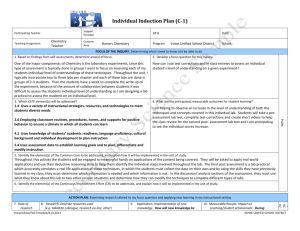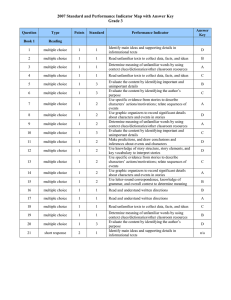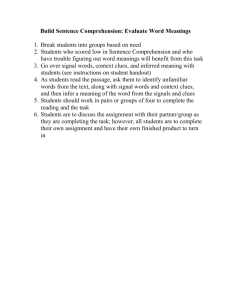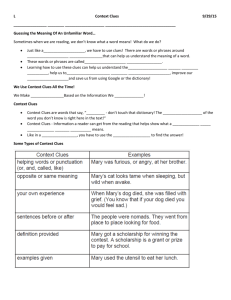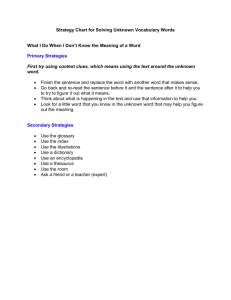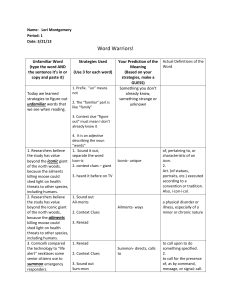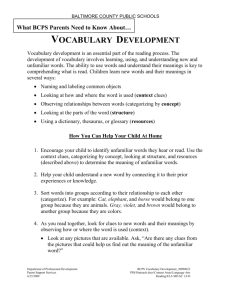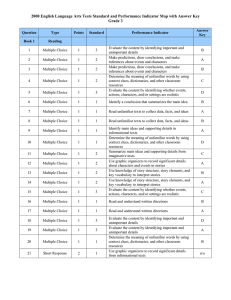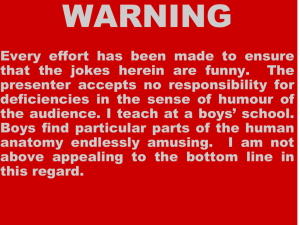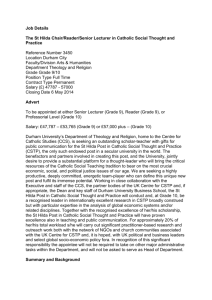Picture Clues - Irvine Unified School District
advertisement
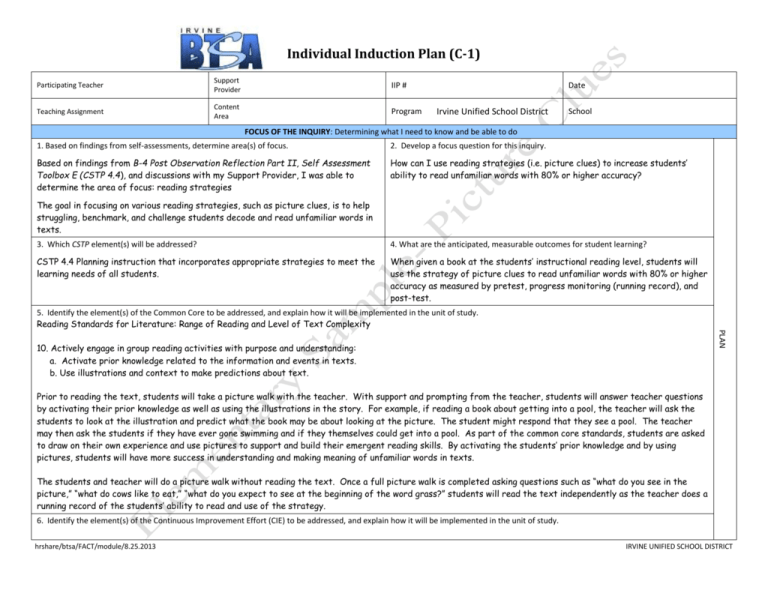
Individual Induction Plan (C-1) Participating Teacher Support Provider IIP # Teaching Assignment Content Area Program Date Irvine Unified School District School FOCUS OF THE INQUIRY: Determining what I need to know and be able to do 1. Based on findings from self-assessments, determine area(s) of focus. 2. Develop a focus question for this inquiry. Based on findings from B-4 Post Observation Reflection Part II, Self Assessment Toolbox E (CSTP 4.4), and discussions with my Support Provider, I was able to determine the area of focus: reading strategies How can I use reading strategies (i.e. picture clues) to increase students’ ability to read unfamiliar words with 80% or higher accuracy? The goal in focusing on various reading strategies, such as picture clues, is to help struggling, benchmark, and challenge students decode and read unfamiliar words in texts. 3. Which CSTP element(s) will be addressed? 4. What are the anticipated, measurable outcomes for student learning? CSTP 4.4 Planning instruction that incorporates appropriate strategies to meet the learning needs of all students. When given a book at the students’ instructional reading level, students will use the strategy of picture clues to read unfamiliar words with 80% or higher accuracy as measured by pretest, progress monitoring (running record), and post-test. 5. Identify the element(s) of the Common Core to be addressed, and explain how it will be implemented in the unit of study. Reading Standards for Literature: Range of Reading and Level of Text Complexity PLAN 10. Actively engage in group reading activities with purpose and understanding: a. Activate prior knowledge related to the information and events in texts. b. Use illustrations and context to make predictions about text. Prior to reading the text, students will take a picture walk with the teacher. With support and prompting from the teacher, students will answer teacher questions by activating their prior knowledge as well as using the illustrations in the story. For example, if reading a book about getting into a pool, the teacher will ask the students to look at the illustration and predict what the book may be about looking at the picture. The student might respond that they see a pool. The teacher may then ask the students if they have ever gone swimming and if they themselves could get into a pool. As part of the common core standards, students are asked to draw on their own experience and use pictures to support and build their emergent reading skills. By activating the students’ prior knowledge and by using pictures, students will have more success in understanding and making meaning of unfamiliar words in texts. The students and teacher will do a picture walk without reading the text. Once a full picture walk is completed asking questions such as “what do you see in the picture,” “what do cows like to eat,” “what do you expect to see at the beginning of the word grass?” students will read the text independently as the teacher does a running record of the students’ ability to read and use of the strategy. 6. Identify the element(s) of the Continuous Improvement Effort (CIE) to be addressed, and explain how it will be implemented in the unit of study. hrshare/btsa/FACT/module/8.25.2013 IRVINE UNIFIED SCHOOL DISTRICT ACTION PLAN: Examining research related to my focus question and applying new learning in my instructional setting 8. Research: Describe resources used (e.g. talked to colleague, research on-line, other) 9. Application: Implementation of new knowledge. How will new knowledge be implemented with students? 10. Measurable Results: Impact on teaching/student achievement. During implementation, what were students/teachers able to achieve? PLAN/TEACH/REFLECT 7. Date of research REFLECTION/APPLICATION hrshare/btsa/FACT/module/8.25.2013 REFLECT/ APPLY 11. Describe how you will apply new learning to future practice. IRVINE UNIFIED SCHOOL DISTRICT

